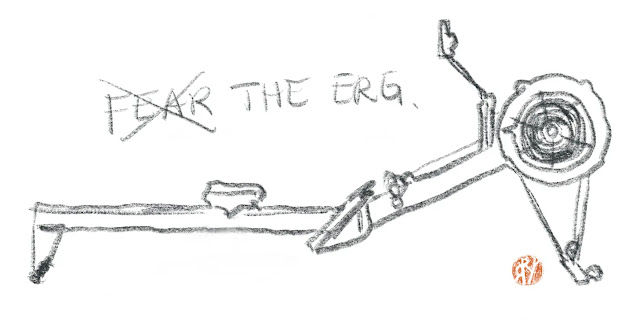Charles Chat: Tips on Taking the Right Course from Five-Time Champion Leigh Heyman
 |
| Heyman's collection of HOCR 1st place medals (Photo courtesy of Leigh Heyman) |
From Leigh:
I'll start off with Weeks and Eliot, since these are the two bridges that are the hardest to navigate, and the source of the most anxiety.
Everyone looks at the course map and says, "it's a no-brainer–never take the right hand arch at Weeks or Eliot." And this is true–they are the arches of last resort. The only reason to use them is to avoid a collision. But then on race day, there you are and you have to make a fast decision. So, how do you avoid needing to use the right hand arches at Weeks and Eliot?
An alternative choice to avoid crashing here, that not everyone considers, is simply backing off or stopping. I realize it's a hard call to make in the middle of an intense race, but paddling for a few strokes, or stopping for 1-2 seconds will still cost you far less time than taking the right hand arch at Weeks or Eliot, which can easily cost you 10-20s. Always remember, the faster crew has right of way, and if they're passing you, they're already ahead of you in the standings, so backing off and letting them through, instead of forcing a bad situation, is in everyone's best interest.
Planning ahead really matters here too. Weeks has a 1200m straightaway as you approach it, and Eliot has a long slow steady turn. Both situations give you plenty of time and space to evaluate your boat's speed in relation to those around you, so this is a chance to anticipate the tactics you'll need to get through the "good" arches, without ruining your day or anyone else's.
The other big question everyone asks is about the right-hand arches on the Powerhouse straight. There are more differing opinions about this than blades at the regatta. Though, the consensus seems to be it doesn't make much difference–what you lose by traveling a slightly longer course, you gain by having an easier, and thus faster, turn through Weeks. In other words, your decision to take the right-hand side of Powerhouse should be based on the traffic around you, and not on any notion that you can shave seconds off your time. The main thing is to look for the clearest water to row in. But if you do choose the right hand arches on Powerhouse, then it is critical that you keep tabs on the other crews going down the center so that you can evaluate and execute the Weeks turn safely.
The only time you may get an actual advantage from racing the right hand side of Powerhouse is when the wind is from the East or Northeast, but those conditions are relatively rare.
Finally, everyone should know that the right hand arch of the Lars Anderson Bridge is not permitted. Violation is a 1-minute penalty, plus 10 seconds for every buoy you miss in the process. Also, while the right hand arch of the BU bridge is now permitted (for years it was not), it's best to just race as though the old rules of the start are still in effect–no right-hand arch at BU and no passing before the bridge–both of these are guaranteed to give you a slower time for your race.
Thanks very much to Leigh for taking the time, and coxswains out there, take note!
-RR



